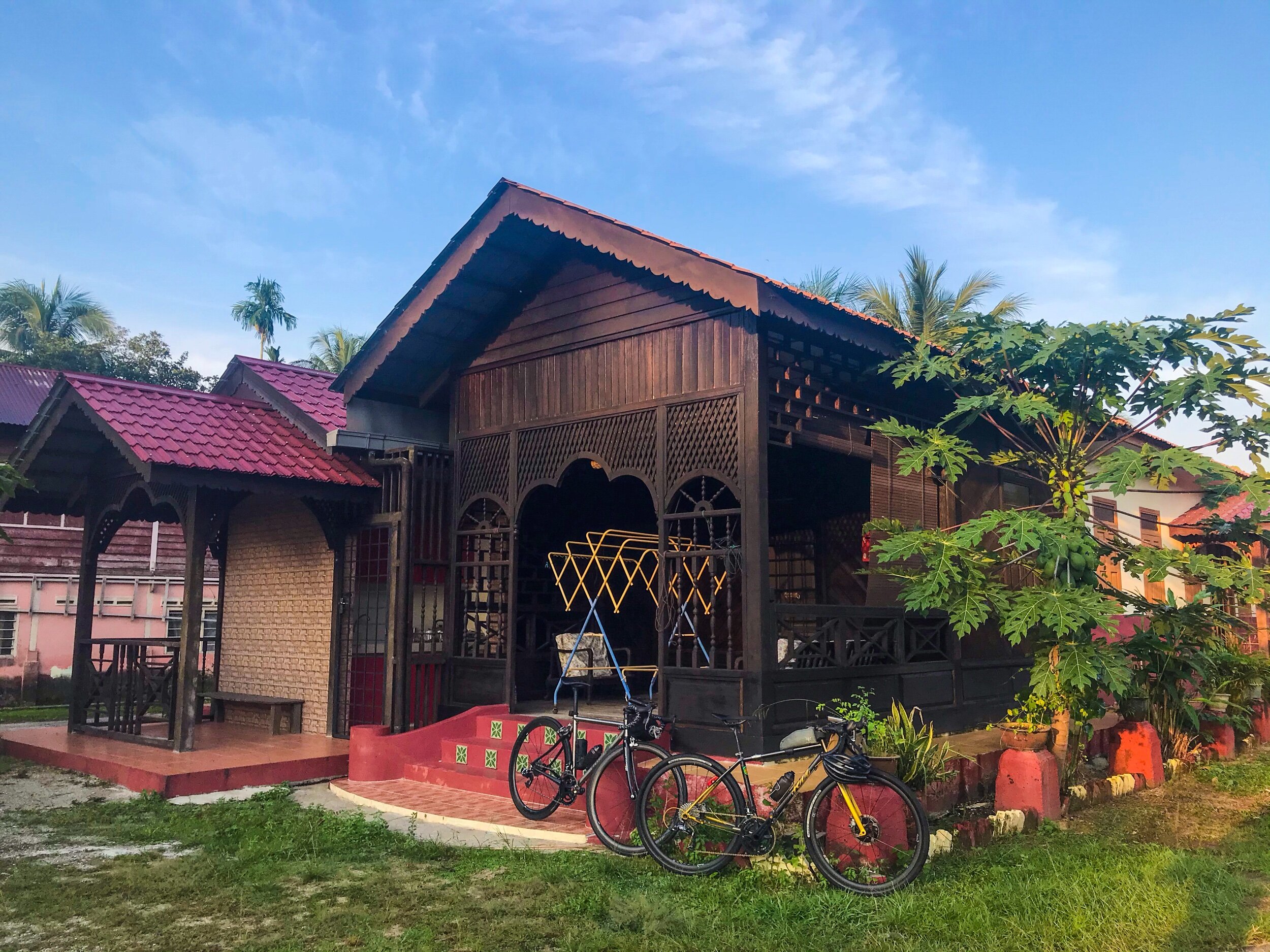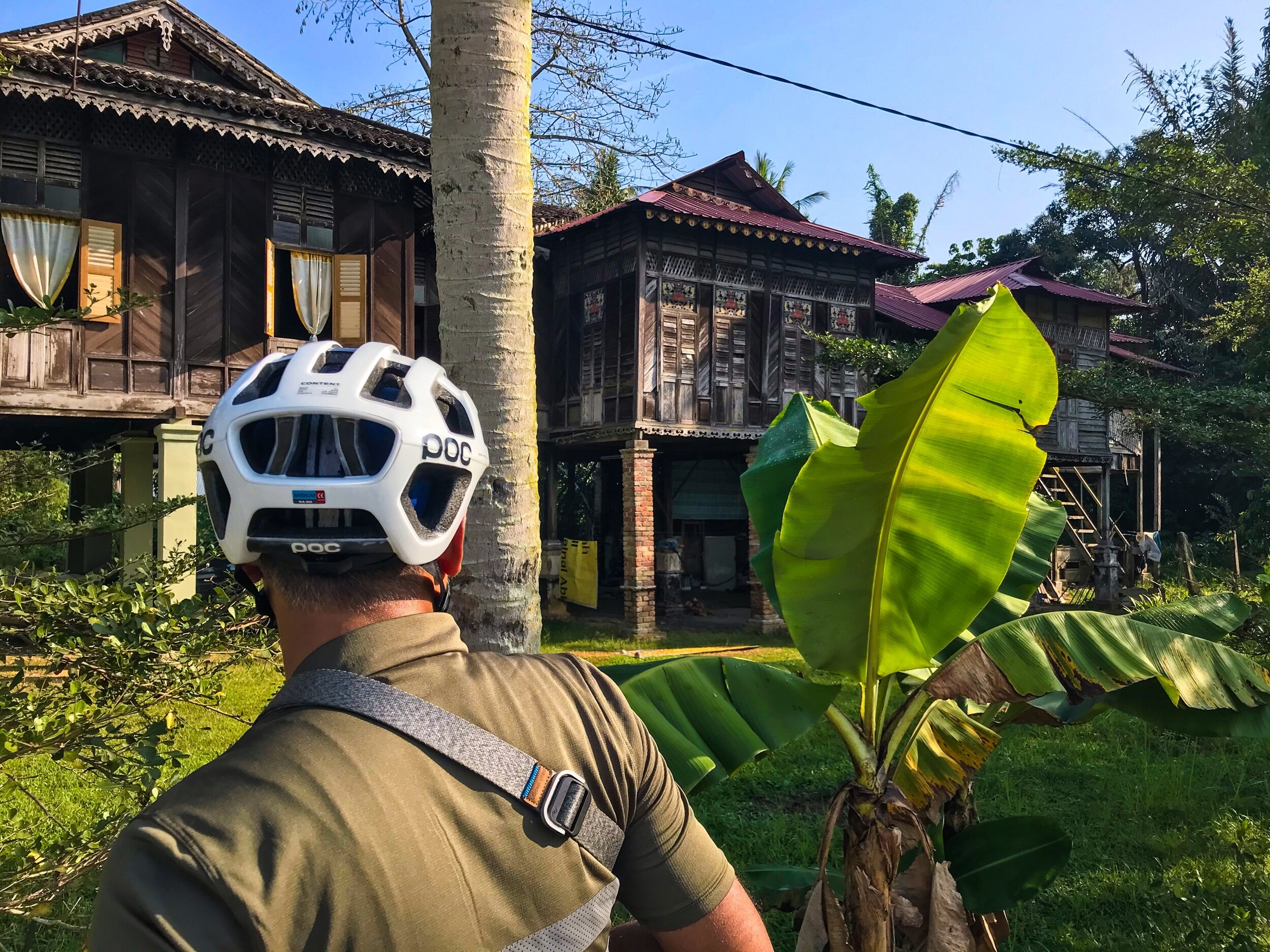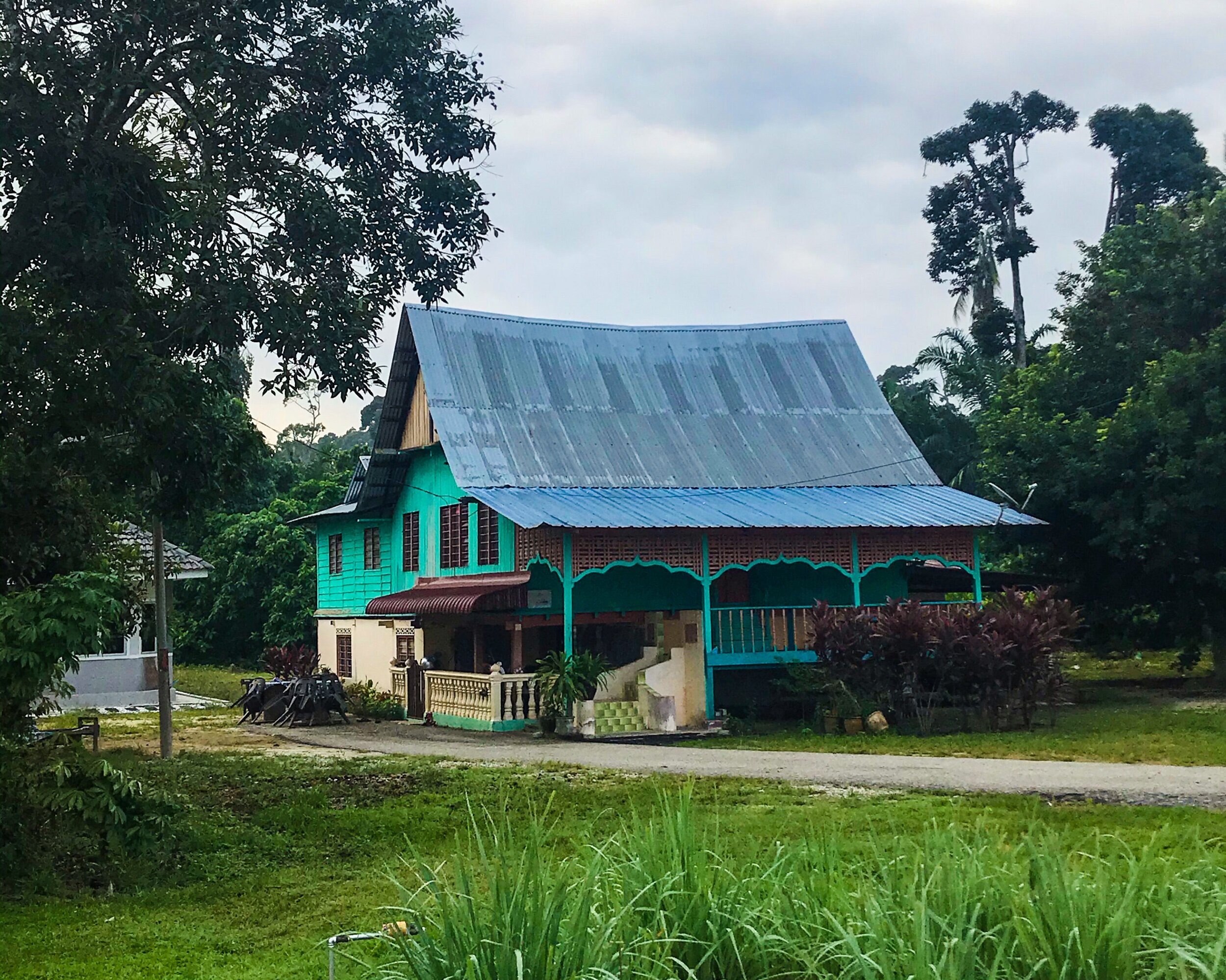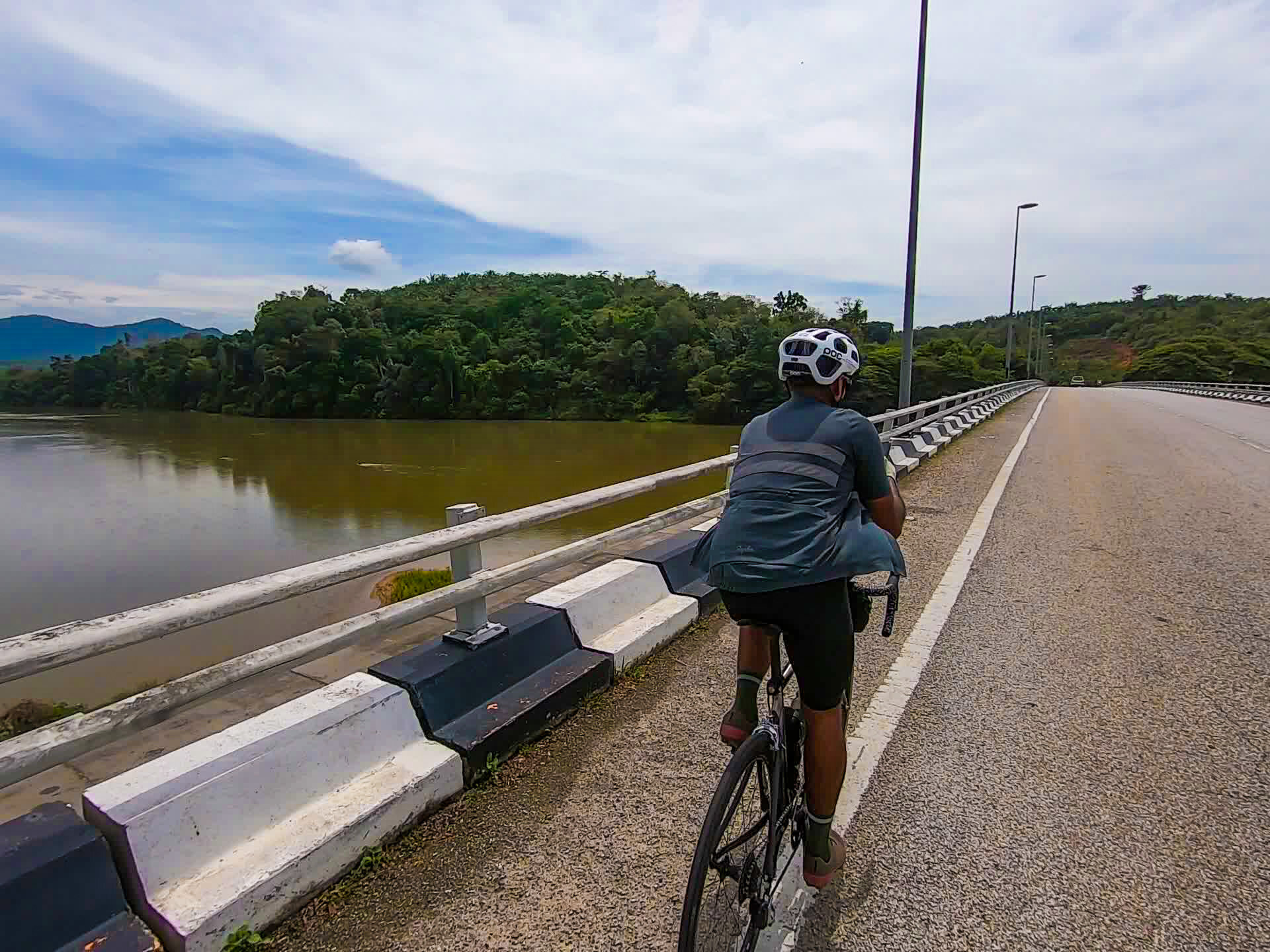Cycling the Bota Parit Kuala Kangsar loop in Perak, Malaysia
Kuala Kangsar is often eclipsed by Ipoh in terms of popularity when it comes to tourism destinations in Perak, despite being the royal town of the state. However, the road from Bota through Parit to Kuala Kangsar in central Perak is perfect for cycling, and is one of the best places in Malaysia to see an often overlooked part of the country’s Malay heritage.
When most tourists come to Malaysia, several locations will always be at the top of their list. Kuala Lumpur, Penang, Malacca and to a lesser degree Ipoh are all top favourites for their old Malaya feel, allowing you glimpses of the colonial era. However, they don’t give you a true feel of Malay culture and heritage, which is a huge part of the country’s history. To see this in all its grandeur, Kuala Kangsar would be one of our top picks, as well as the central Perak district.
Serving as the capital of Perak until 1876, Kuala Kangsar and its surrounding areas have a collection of architectural gems that date back to more than a hundred years. As the location for the Sultan’s official residence, it has been Perak's royal seat since the 18th century. It is one of four towns that play a role in Perak's complex succession system, and is where the first Conference of Rulers of the Federated Malay States, the Durbar, was held in 1897.
If you look at Malaysia’s colonial era, Kuala Kangsar was the administrative seat of the first British Resident in the Malay Peninsula, James W. W. Birch, from October 1874 to November 2nd 1875, when he was murdered. The first rubber tree in Malaysia was planted there by English botanist Henry Nicholas Ridley in the late 1800s; he also helped Malaya and eventually Malaysia become the largest rubber producer in the world.
Victoria Bridge was built in Kuala Kangsar in 1900, said to be one of the most beautiful bridges in SouthEast Asia in that era. Even the first Malaysian scout troop was established in Kuala Kangsar, bearing the squad number 001. This isn’t a history lesson by any means since it barely skims the surface, but looking at these facts you start to get the picture.
Central Perak district (Perak Tengah)
Central Perak is divided into two by Sungai Perak, a river that flows through Bota and Parit, and all the way to Kuala Kangsar itself. Two main roads flank this river, and both are fairly quiet stretches that we’ve confirmed are fairly safe to ride through. These two routes have a mixture of flat and rolling hill terrain, plenty to keep cyclists occupied throughout the journey.
The name Bota is said to have originated from a giant or ogre who lived underground there, coming out of its cave lair to snatch children playing caught without pants at dusk. Some theories say this Bota monster is a wood/jungle spirit, but it is also highly likely that it is the local bogeyman conjured by parents as a means to ensure their kids return home before dark, and to wear pants as a form of protection from mites.
Before that, Bota was previously known as Brahman Indera, and was the administrative capital of several sultans from the early 1700s. It is a very quiet rural area that is predominantly Malay, divided into three main groups, the natives of Perak, the natives of Kedah and the Banjar people who originated from Banjarmasin in Kalimantan, Indonesia.
Meanwhile Parit is a small town which supposedly takes its name from its original founder Tok Parit, who settled there after crossing over from Kampar, Sumatera circa 1600. It was originally a small town, with some 10 houses for only 30 residents. Both Bota and Parit form an important part of the central Perak district, which are home to dozens of heritage homes that are still intact.
Because of the heavily Malay demographic, and the fact that Kuala Kangsar is the royal town for the Perak state, here lies some of the most beautiful Malay wooden houses in all of Malaysia. We often explore a lot of quiet village areas while cycling, and I can attest to the fact that some of these homes are the most striking I’ve ever seen, ornately decorated and painted the most vivid colours.
Jalan Bota-Parit Kanan & Kiri (140km return trip)
DAY 1: bota TO kampung beluru
Distance 70km
Climbing 730m
Grade Easy/Medium
On the right side of the river, the stretch of road that is of interest starts from Bota, going roughly 16km north until the town of Parit. This stretch is a flat and easy ride, and is one of the best places to see heritage homes of the Malay kampung variety. This part of the road is cycleable for even the most newbie cyclist, and the only real danger is making too many stops for photos - which means you will have to finish the final stretch of the journey in the heat of the afternoon.
Upon reaching Parit it will be a good idea to pick a spot to fuel up for the rest of the ride, roughly 54km to Kuala Kangsar. Two options for breakfast are either the food court that has a number of stalls selling local Malay gerai fare, while Restoran Yi Fatt is a Chinese style kopitiam 50m down the road. Once done, ride towards the clock tower that commemorates Merdeka Day in 1957, before heading out of town.
A short distance out of town you will pass by several heritage homes that have been converted into mechanic shops, which are the first sign that you will soon start climbing. 4km out of Parit town you will take a right turn and the road starts to go uphill, the start of rolling terrain that will continue pretty much all the way to Kuala Kangsar, with some flat stretches in between to give us a breather.
Upon reaching Kuala Kangsar, have a late lunch at the open air food court that overlooks the river, where there are many stalls with some local favourites to tickle your fancy. One of the specialties include laksa sarang burung, which are wheat (not rice) noodles in a coconut milk and tamarind based gravy topped with fried egg shaped like a bird’s nest. For those who eat pork, one of the local Chinese delicacies not to be missed is beef/beef ball/pork ball noodles. There’s plenty of ABC shaved ice and cendol to be had too.
After a late lunch, we rode another 10km left to our homestay in Kampung Beluru. A short distance down the main road we took a turn into a small paved path that appeared to lead to nowhere, riding on a winding road through a quiet kampung tucked into lush greenery until we reached the village. Our homestay was a lovely wooden kampung house that had been renovated to include modern amenities, and overlooked the quiet paddy field outside the gate.
Of course, it is entirely possible to do this route in reverse, Kuala Kangsar to Parit, which means you will tackle the hills with fresh legs at the start of the ride. This would also mean you have a nice end to the journey, cooling down on the final stretch where you have the views of heritage homes along the final flat roads. However, you’d have some steep inclines to tackle if riding north to south, so choose your route carefully.
DAY 2: kampung beluru to parit
Distance 55km
Climbing 490m
Grade Easy/Medium
On the left side of Sungai Perak the road from Kuala Kangsar to Bota is even more quiet, going through plantations and villages. It is the easier of the two routes if traveling north to south, which feature rolling hills that will still feel like you are going downhill more than anything else (which you are slightly). Bomb each downhill and it will take you up most of the next inclines.
But breakfast is always needed first, and after a quick walk through the Sunday morning market, we found our stop 13km into the journey, not too far out of the main Kuala Kangsar town square. Selera Kampung Bendang Panjang sounds like it would be overlooking paddy fields due to its name (bendang meaning paddy field) but in reality it is actually right next to a plot of rubber trees. A range of food is available, but our advice is to always go with the local fare!
From there, it is not too long before you start encountering rolling terrain, but there is a fair bit of roadworks to be wary of. Despite some tight stretches, cars that travel along the route are quite considerate of cyclists, and we had a whale of a time freewheeling a lot of the way. There aren’t many stops that you can make along the way, but by the 35km mark you will reach Manong town, where there is a petrol station for any toilet breaks, and also where we found fresh coconut to drink.
From there, we encountered several short but steep uphill climbs, and the remaining 10km to Parit featured undulating roads that were not flat but fairly easy cycling for anyone with reasonable fitness. The last incline takes you to a bridge that crosses Sungai Perak, before the final 4km to Parit town. If you need another look at the picture perfect homes in Bota you could add another 16km of cooling down leisurely pedaling along the remaining flat stretch, but we opted to end the ride in Parit town itself.
We had a quick shower in the toilet at the foodcourt, but you’re probably better off finding a different location for this. The local mosque should allow you to do so too, provided you’re respectful of the dress code expected at all mosques around the world. Do note that you’d have to ensure you have your own toiletries and towel for use, since showers aren’t easily available in the first place, while those that are don’t come equipped like hotel rooms.
Since we had a support vehicle following us all along the way, we had the chance to pile in and finish our trip with lunch at Nasi Bamboo Sungai Klah in Sungkai. The unique meal features rice steamed in bamboo accompanied by a variety of dishes to eat with. We particularly recommend the grilled lamb and fried mushrooms, though truth be told everything was pretty tasty. It was a fitting way to end the weekend, before heading home to the city.
*This route will be available as an organised ride with a support vehicle through our bike tour company Kopi Ride Ventures, for a very reasonable fee. It will also be a self guided and self supported option. If you’re keen to explore any of our local routes in Malaysia and cycle off the beaten path roads, send us an email via the contact form and we will be happy to arrange it for you.












































